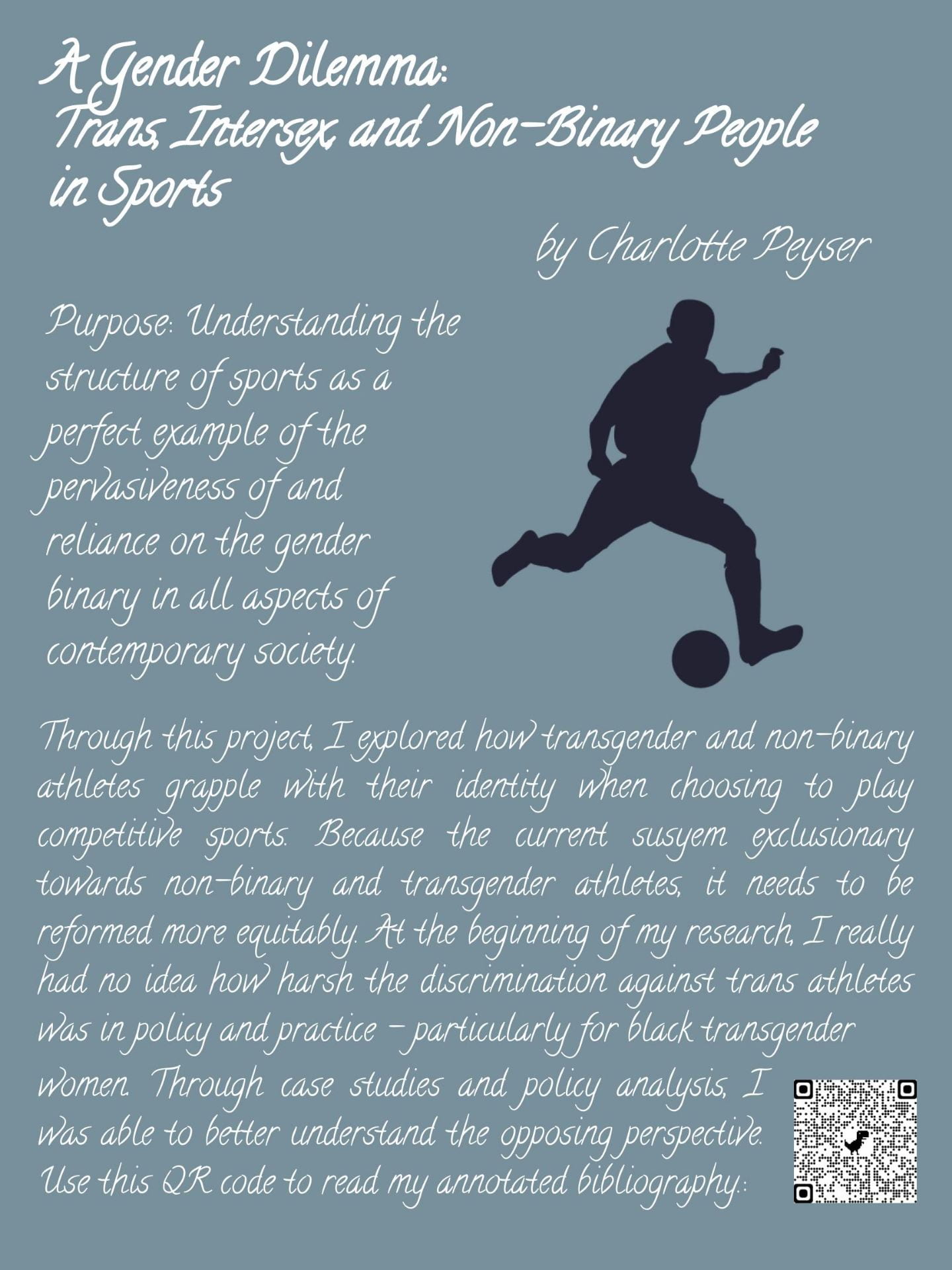Project by: Charlotte Peyser (11th Grade)
Project Advisor: Charlene Cruz-Cerdas
Student(s)’s Advisor(s): James French
Description of the Project: I would like to take on this project because athletes should not be forced to choose between pursuing a passion such as playing a competitive sport and our gender identity. This is something trans and non-binary athletes struggle with particularly, however, the upholding of the gender binary that is so explicit in the context of sports extends to all other facets of our lives.
Final Product:

 Loading...
Loading...
Final Reflection on Learning:
These past few months I have explored how transgender and non-binary athletes grapple with their identity when choosing to play competitive sports. After a certain level, sports teams generally become single-sex. For this reason, I have noticed talented gender non-conforming athletes opt-out of playing competitive sports for their identity or inversely put aside their identity to play competitively. I myself have had to make a decision to put my identity as a non-binary person temporarily aside to pursue soccer, a passion of mine, at a competitive level. In this annotated bibliography I first gave an overview of the basic terms and historical background for navigating the topic, and later moved on to discussing the possibilities of making sports as an institution more inclusive and accessible to the genderqueer community as a whole. The dilemma under discussion addresses how single-sex sports were created in the name of fairness, to give women the opportunity to compete at high levels due to the assumption that males have a natural advantage over females when it comes to sports. However, the science backing the premise is not conclusive at all levels and while attempting to be inclusive towards cisgender women, it excludes non-binary and transgender athletes. Because the current is exclusionary towards these people it needs to be reformed more equitably. At the beginning of my research, I really had no idea how harsh the discrimination against trans athletes was in policy and practice – particularly for black transgender women. Through case studies and policy analysis, I was able to understand the opposing perspective.
Update on Progress from Weeks 1-3:
Beginning this research I read sources that gave a general background and good foundation for the topic discussed for my project. In broad terms, I analyzed the history of sex segregation in sports, the reasons behind that, and distinctions between making sports accessible to women – as a marginalized group – and not accessible to those whose identities or physiologies did not conform to the gender binary.
Update on Progress from Weeks 4-6:
The work I did these weeks focused more specifically on different cases of professional trans, intersex, and nonbinary athletes and the discrimination they faced. Although it was to stay on track with timing because junior year was picking up, these cases helped me understand the policies that uphold sex segregation in sports from high school to collegiate to professional levels.
Update on Progress from Weeks 7-9:
Having acquired a good understanding of the topic in discussion on more of a legal level thanks to the research conducted about the specific policies surrounding this dilemma, I finally tried to understand what potential solutions to this issue have arisen, or what new inclusive solutions could look like. The main obstacles in the examples I found were at the foundation rooted in transphobia and denial of human rights to non-cis-gendered people and how this intersected with racism and sexism.
